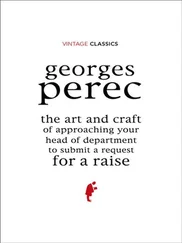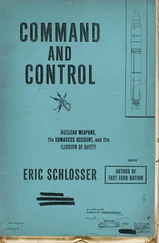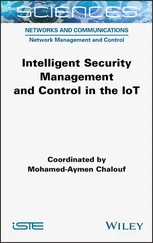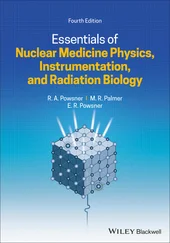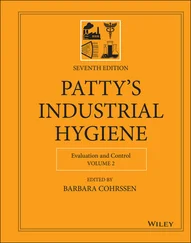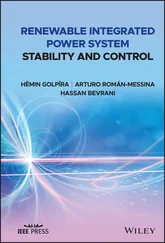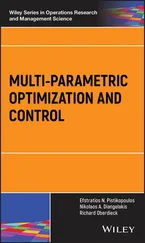2 Chapter 2Figure 2.1 Monomers for zwitterionic polymers.Figure 2.2 Amines for dendritic molecules.Figure 2.3 Oil removal vs . settling time of benzyl-G3.0 (47).Figure 2.4 Oil removal vs . settling time of octyl-G3.0 (47).Figure 2.5 Polymer dosage vs . settling time (47).Figure 2.6 Experimental environment (65).
3 Chapter 3 Figure 3.1 Injection molding engine (4).Figure 3.2 Reaction injection molding process (118).Figure 3.3 Concept of a self-optimizing injection molding process (127).Figure 3.4 Multilevel control system architecture (8, 132).Figure 3.5 Flow curve of shear viscosity versus shear rate (147).Figure 3.6 Change in shrinkage with the increase of injection cycles (152).Figure 3.7 Side view of an EPS recycling and extruding device (193).Figure 3.8 Methylene blue.Figure 3.9 Injection molding machine with a nozzle valve (216).Figure 3.10 Sectional view of a hot runner mold (218).
4 Chapter 4Figure 4.1 Schematic architecture of the embedded thermocouple (4).Figure 4.2 Schematic diagram of an RTD circuit (24).Figure 4.3 Take-away conveyor (36).Figure 4.4 Monomers for a multilayer polymer system.Figure 4.5 Chlorhexidine.Figure 4.6 Side view of a delivery assembly (72).
5 Chapter 5Figure 5.1 Perspective view of a nozzle (2).Figure 5.2 Mold design (5).Figure 5.3 Nonlinear response (16).
6 Chapter 6Figure 6.1 Framework of a typical experimental design (1).Figure 6.2 Setting the initial process parameters with CBR (1).Figure 6.3 Organosilanes.Figure 6.4 Single-screw extruder (53).Figure 6.5 Block diagram of the blown film extrusion apparatus (92).Figure 6.6 Nip roll assembly (94).Figure 6.7 Horizontal stack configuration (95).Figure 6.8 Drugs for testing.Figure 6.9 Continuous filter (122).Figure 6.10 Screen changer device (123).Figure 6.11 Wheel-type blow molding machine (124).Figure 6.12 Pressure transducer (131).Figure 6.13 Piezoresistive thin-film sensor system (136).Figure 6.14 Schematic diagram of the gas flow (146).Figure 6.15 Rotary thermoform drum (164).Figure 6.16 Organic phosphites.Figure 6.17 Hindered amines.Figure 6.18 Antioxidants.
7 Chapter 7Figure 7.1 Centrifugal dryer (7).Figure 7.2 Plastic pellet dryer with control system (11).Figure 7.3 Friction puller (14).
1 Chapter 1 Table 1.1 Cost classification techniques (3). Table 1.2 Recent review articles and their targeted scope (3). Table 1.3 Plastic waste from various countries (65). Table 1.4 Floating debris (66). Table 1.5 Feed materials, liquid mixture (93). Table 1.6 Feed materials, gas mixture (93). Table 1.7 Cracked products from gas material and naphtha (93). Table 1.8 Cracked products from liquid material and naphtha (93).
2 Chapter 2Table 2.1 Modulus and relative moduli for uniaxial compression.Table 2.2 Components of a PAGAT polymer (46).Table 2.3 Molar ratios of acrylamide to HADE.
3 Chapter 3Table 3.1 ABS 780 (Kumho Chemicals Inc.) (16).Table 3.2 Controllable variables (54).Table 3.3 Analysis of variance for shrinkage of POM (102).Table 3.4 Design variables (118).Table 3.5 Three-level variables for modeling (8).Table 3.6 Material properties (174).Table 3.7 Circumference (175).
4 Chapter 4Table 4.1 Peak removal force and probe distance (66).
5 Chapter 5Table 5.1 Specifications of Common Heaters (16).
6 Chapter 6Table 6.1 Expert system-based methods (1).Table 6.2 History of polymer processing technologies (24).Table 6.3 Major control approaches for continuous single-screw extrusion (54).Table 6.4 α -Olefin comonomers (96).Table 6.5 Processing parameters in the cast film production (93).Table 6.6 Standards for plastic pipes.Table 6.7 Performance results of the tested algorithms (152).Table 6.8 Phosphites and phosphonites (167).Table 6.9 Hindered amines (167).Table 6.10 Antioxidants (167).Table 6.11 Peroxide scavengers (167).Table 6.12 Yellowness index and impact strength (167).
7 Chapter 7Table 7.1 Typical drying conditions for thermoplastic materials (3).Table 7.2 Checklist for the efficiency of a dryer system (3).Table 7.3 Polymers for drying.
1 Cover
2 Table of Contents
3 Title Page
4 Copyright Copyright © 2021 by Scrivener Publishing LLC. All rights reserved. Co-published by John Wiley & Sons, Inc., Hoboken, New Jersey, and Scrivener Publishing LLC, Salem, Massachusetts. Published simultaneously in Canada No part of this publication may be reproduced, stored in a retrieval system, or transmitted in any form or by any means, electronic, mechanical, photocopying, recording, scanning, or otherwise, except as permitted under Section 107 or 108 of the 1976 United States Copyright Act, without either the prior written permission of the Publisher, or authorization through payment of the appropriate per-copy fee to the Copyright Clearance Center, Inc., 222 Rosewood Drive, Danvers, MA 01923, (978) 750-8400, fax (978) 750-4470, or on the web at www.copyright.com . Requests to the Publisher for permission should be addressed to the Permissions Department, John Wiley & Sons, Inc., 111 River Street, Hoboken, NJ 07030, (201) 748-6011, fax (201) 748-6008, or online at http://www.wiley.com/go/permission . Limit of Liability/Disclaimer of Warranty: While the publisher and author have used their best efforts in preparing this book, they make no representations or warranties with respect to the accuracy or completeness of the contents of this book and specifically disclaim any implied warranties of merchantability or fitness for a particular purpose. No warranty may be created or extended by sales representatives or written sales materials. The advice and strategies contained herein may not be suitable for your situation. You should consult with a professional where appropriate. Neither the publisher nor author shall be liable for any loss of profit or any other commercial damages, including but not limited to special, incidental, consequential, or other damages. For general information onour other products and services or for technical support, please contact our Customer Care Department within the United States at (800) 762-2974, outside the United States at (317) 572-3993 or fax (317) 572-4002. Wiley also publishes its books in a variety of electronic formats. Some content that appears in print may not be available in electronic formats. For more information about Wiley products, visit our web site at www.wiley.com . For more information about Scrivener products please visit www.scrivenerpublishing.com . Cover design by Russell Richardson
5 Preface
6 Begin Reading
7 Index
8 End User License Agreement
1 vii
2 ii
3 iii
4 iv
5 v
6 vi
7 1
8 2
9 3
10 4
11 5
12 6
13 7
14 8
15 9
16 10
17 11
18 12
19 13
20 14
21 15
22 16
23 17
24 18
25 19
26 20
27 21
28 22
29 23
30 24
31 25
32 26
33 27
34 28
35 29
36 30
37 31
38 32
39 33
40 34
41 35
42 36
43 37
44 38
45 39
46 40
47 41
48 42
49 43
50 44
51 45
52 46
53 47
54 48
55 49
56 50
57 51
58 52
59 53
60 54
61 55
62 56
63 57
64 58
65 59
66 60
67 61
68 62
69 63
70 65
71 66
72 67
73 68
74 69
75 70
76 71
77 72
78 73
79 74
80 75
81 76
82 77
83 78
84 79
85 80
86 81
87 82
88 83
89 84
90 85
91 86
92 87
93 88
94 89
95 90
96 91
97 92
98 93
99 94
100 95
101 96
Читать дальше

